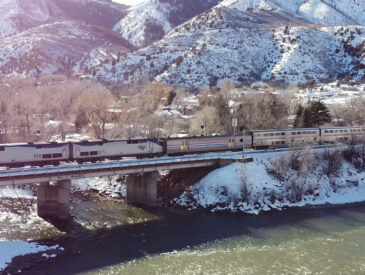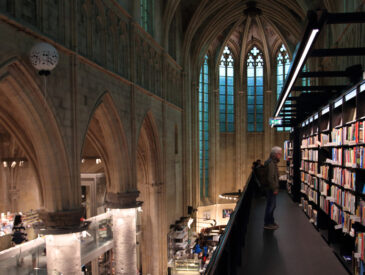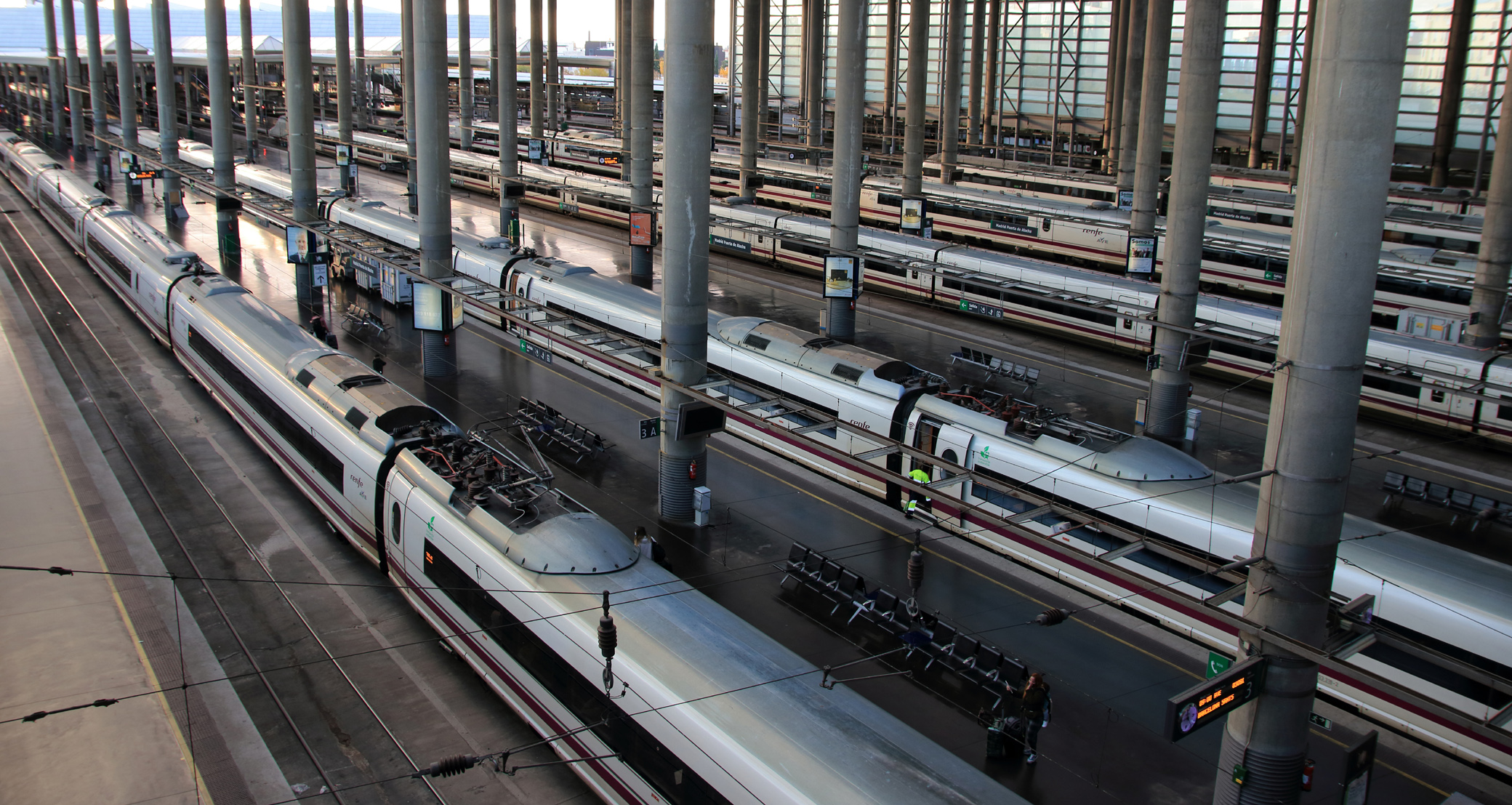
Although I couldn’t resist flying on BA’s A380 to Madrid, my original motivation for a trip to Spain was an architectural pilgrimage to Cordoba, some 200 miles south. On a previous visit to the capital I’d been impressed by the fleet of high speed trains waiting at Atocha station, and hoped one of those would be available for the route.
Sure enough, Renfe’s AVE (Alta Velocidad Española) network would make short work of this trip, with a 1h50 journey time. Another 50 minutes along the same line is Malaga, where I could pick up a flight home instead of backtracking to Madrid.
I paid a quick visit to the Man in Seat 61 to get an understanding of booking options, which provides a far more comprehensive guide than I could hope to. The main lesson is that for the AVE trains, there are two classes of travel, and three levels of flexibility – beware that a semi-flexible elige ticket could be for standard or first class. I also found that RailEurope wasn’t offering up the full schedule of services, so I booked with trainline instead; tickets are electronic and thanks to a QR code don’t even need to be printed.
For the longer Madrid – Cordoba leg I opted for first class. Pricing seems to be revenue managed based on both the specific train you want, and how far in advance you’re booking: one month out, an elige confort ticket at 9:35 on a Friday morning cost me £60. This was semi-flexible, allowing a refund of 70% up to 5 minutes before departure, but does not entitle you to a meal service (for that – where available – you need a premium ticket, which also grants full flexibility).
On board, first class seating is arranged 1-2, and unsurprisingly I was assigned one of the solo seats:
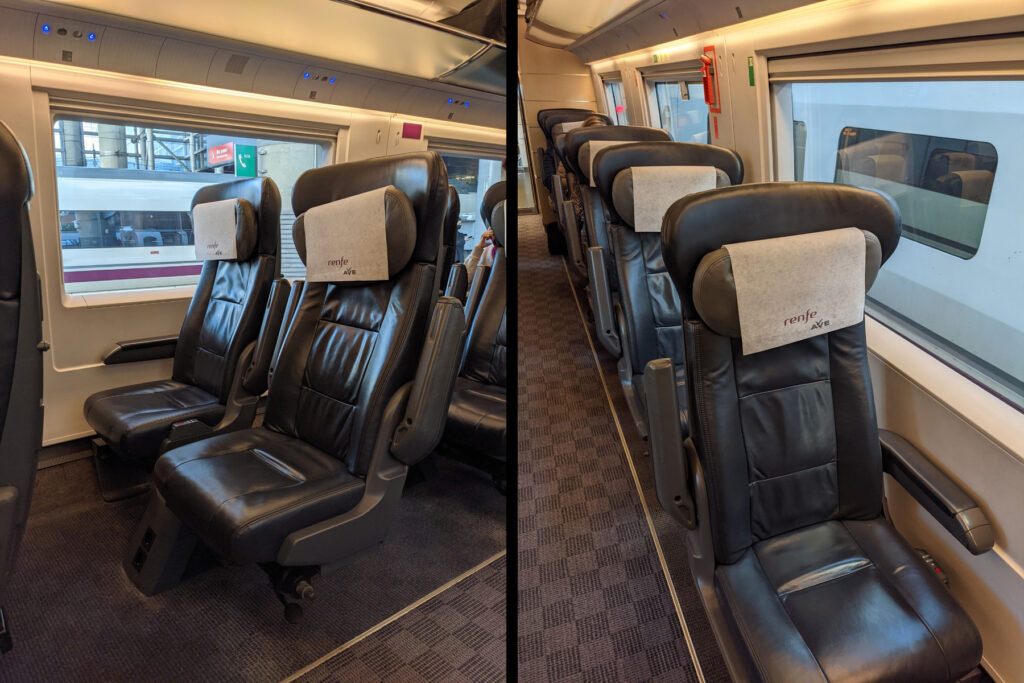
The carriage was nearly full, but didn’t feel crowded: unlike in the UK, there’s no standing passengers, with seat reservations mandatory; and spacing both between rows and across the aisle seemed generous. The vestibule had extended storage for larger suitcases – something that is often surprisingly lacking on long distance trains – and there were also overhead racks for smaller items. An information screen indicated the next station, and the current speed. Once clear of the city, that was locked in at 270km per hour – also an improvement on British intercity travel!
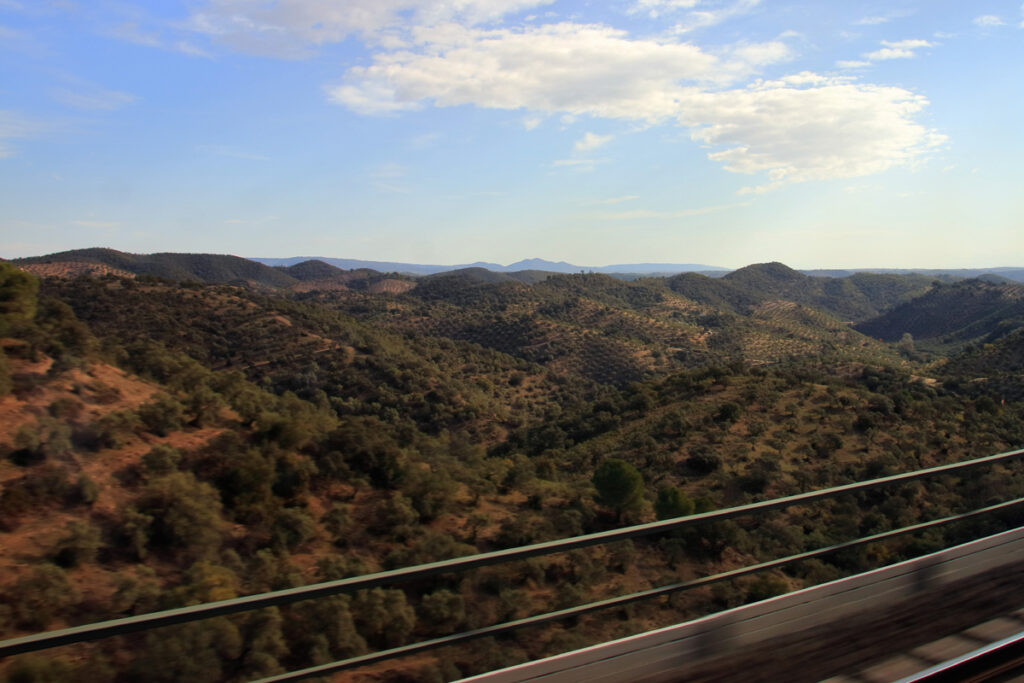
All that speed, plus the glare of a low winter sun, made photography difficult, but to be honest this isn’t the most scenic of routes. If I had to describe the Spanish landscape in a single word, it would be ‘dry’. Views improved closer to Cordoba, as the line makes its way between some nature reserves, but mostly I was happy to settle in with a book.
With the onward leg to Malaga taking less than hour, I figured a basic fare in standard class would be fine (ironically, my plans were then disrupted and the semi-flexibility of an elige fare would have been appreciated). That came in at a mere £22, departing on a Saturday afternoon (although that was thanks to booking in advance – looking at my options on the Friday, prices were now more than double).
Standard class seating is in pairs, but I was lucky enough to get both seats to myself so had more space than in my first class solo seat (which was quite narrow). Obviously you can’t assume that will happen as a lone traveller, so if you value personal space particularly highly first class is still the way to go. Standard seats are also less comfortable with reduced leg room, but still far better than you’d find in economy on a plane.
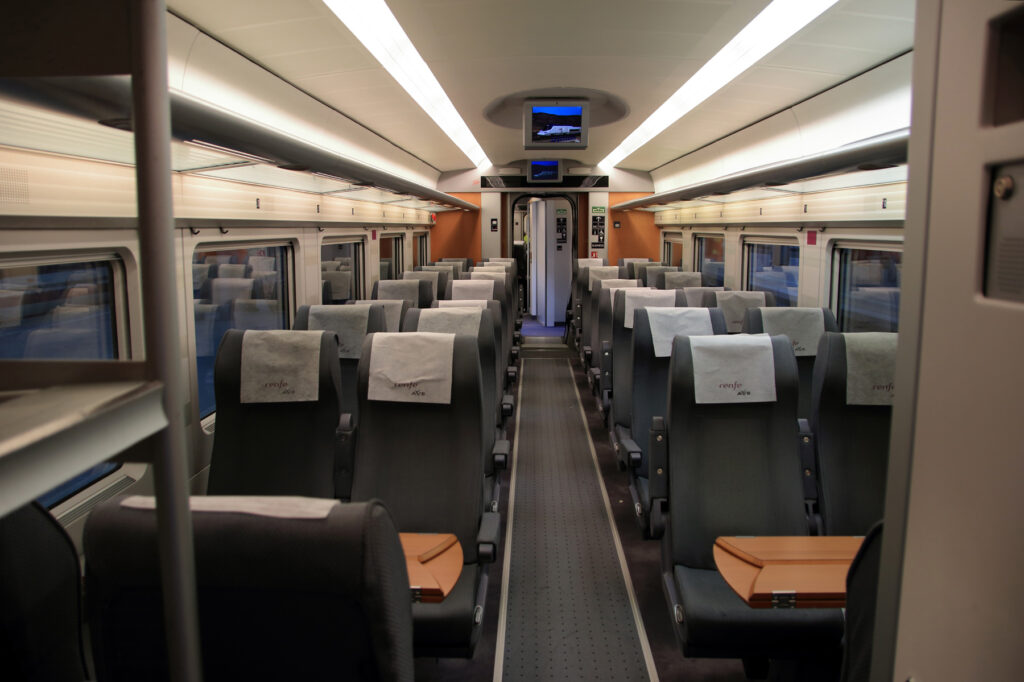
Worth mentioning briefly are the suburban / commuter cercanias trains. I used these in both Madrid (to get to Atocha from my hotel) and Malaga (for the airport). The Madrid journey was free; if you’re connecting to or from an AVE service, check the booking for a CombinadoCercanias code which can be used instead of payment at a ticket machine. In Malaga I had to pay, but €2.30 is a bargain for an airport transfer. These are far less fancy trains, but as I spent less than fifteen minutes on them in total I have no complaints!
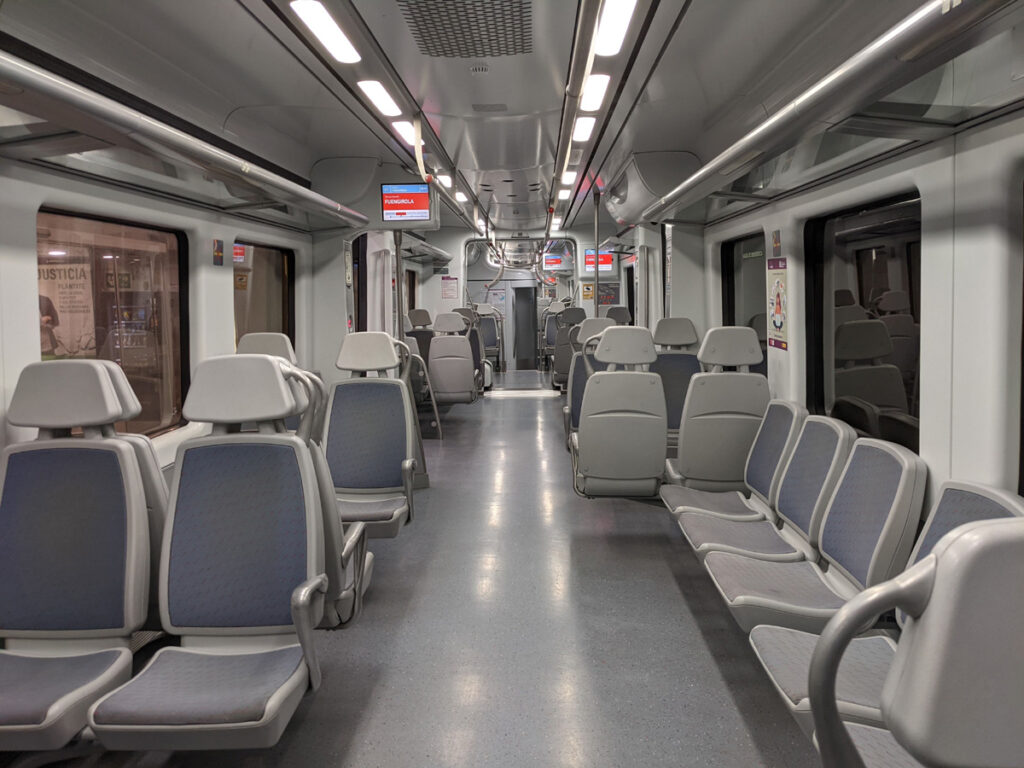
I should also note that I don’t speak a word of Spanish, yet found the entire system simple to navigate. As mentioned, bookings are easily made in advance online; ticket machines can be switched to a variety of languages, and on board the announcement of each upcoming station was made in English as well as Spanish. I’m not sure how well I’d have got on ordering food from the snack cart, but journeys were so quick I didn’t need anything!
One last detail to keep in mind is that there is airport-style security before you can access the high speed train platforms. At Atocha this was a combined checkpoint (with multiple scanners) whereas in Cordoba it was per-platform, but in both cases only a few extra minutes need to be budgeted – it’s just your luggage that gets scanned, not you.
So, would I pick the train over the plane in Spain? Absolutely. For high speed services, the AVE network is second only to China’s in size so I’d expect most city pairs to be linked without needing to resort to slower equipment. From my experiences on this trip the prices are reasonable and the quality high. Plus of course it’s far better for the environment. I just wish the UK had something to rival it…

